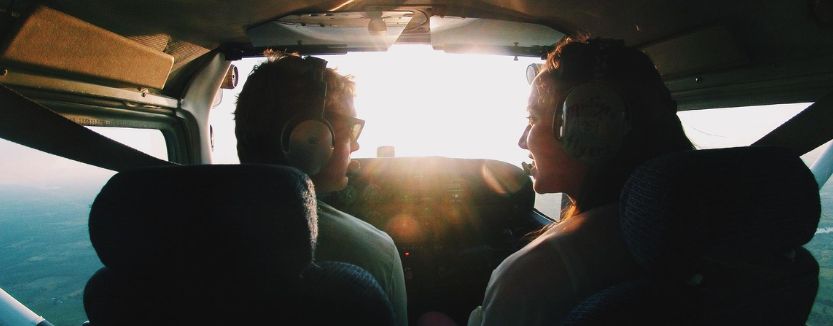The correct use of aeronautical phraseology is a fundamental element in your training as a pilot. A brief, concise and clear communication between aircraft and ground control (route, tower, approach, etc.) and eventually between aircraft is a major factor in air transport safety. In addition to knowing how to fly an aircraft, a good pilot must know the language code used in aviation to avoid confusion when receiving any notification from the ground, or expressing his requests to ground control, as well as being able to listen to the appropriate frequency in each case to interpret any radio communication that could affect his flight.
These codes are designed to create effective communication between people of any nationality in order to report any information relevant to the smooth running of the flight.
In order for the flight to run smoothly, the information shared during communications must be as effective as possible. This is achieved by using pre-established locutions, which in the case of clearances are “queued” (repeated) by the aircraft pilot. Thus, if the tower authorises take-off, for example, on runway 24 right at El Prat airport in Barcelona, the pilot will repeat “Authorised to take-off runway 24 right” and add the aircraft’s call sign or registration number. This ensures that the message is perfectly received and understood.
Origin of language codes in aviation
Communication between aircraft and ground is and has been necessary to ensure the safety of both the flight and the airport, and other traffic (aircraft) circulating in a given area. Originally, a simple system was created using Morse code. To avoid distractions, pilots simply tapped the letter “R” in Morse to say received.
With the invention of radio. The “R” was a sound that could lead to confusion, so “Romeo” or “Roger” was used as a substitute for the letter. Thus the aviation code language was born.
With the creation of the International Civil Aviation Organization, the aviation code began to be stipulated and expanded, assigning a code to each letter, thus originating the phonetic alphabet, in which each letter is assigned a word phonetically the same in any language: A, Alpha; B, Bravo; C, Charly, and so on up to the “w” assigned to Whisky.
Aeronautical phraseology used
Beyond a particular use of words, aeronautical communication is also shaped by a very strict use of syntax. The structure and order of sentences is designed to create effective communication. The philosophy is to give as much and as precise information as possible, while occupying the radio frequency for as little time as possible.
Standard aeronautical phraseology avoids ambiguity in communication and therefore minimises the risk of an accident.
According to the Guide to Good Practice – Phraseology and Communications, “of the many factors involved in this communication process, phraseology is perhaps the most important, as it allows communication to take place quickly and effectively, reducing the possibility of misunderstanding. Standard phraseology not only reduces the risk of a message being misinterpreted, but also helps to quickly detect errors in the collation/confirmation (readback/hearback) phases. In fact, the use of ambiguous or non-standard phraseology is one of the most frequent causal and contributing factors in accidents and incidents”.
The widespread use of English – despite the fact that there are five other official ICAO languages, including Spanish – helps to avoid errors, especially if we take into account that crews are nowadays strongly multinational in a good number of airlines.
In order to become a pilot, both understanding and excellent communication skills must be achieved. The success or failure of a flight can depend on these skills. The most important thing to master aeronautical communication is training, but also practice. At EAS we have both training courses so that you leave with all the necessary knowledge to be able to fly an aircraft with guarantees.
